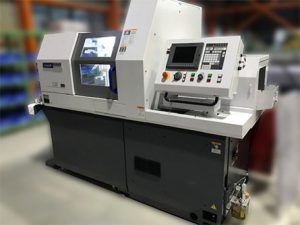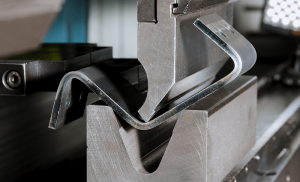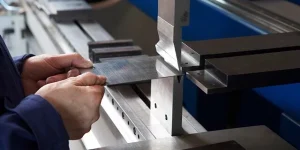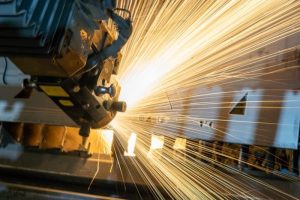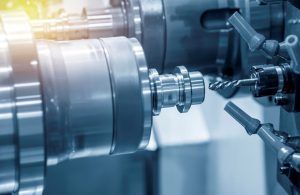CNC machining offers higher precision, efficiency, and safety, with lower labor costs and greater flexibility compared to traditional manual machining
Accuracy and Precision
When speaking about tolerances, accuracy refers to how close to the dimensions of the part you machined the part. Because CNC milling is done using digital templates and automated control, it makes it easy for them to adhere to exact specifications, which would result in superior levels of accuracy. This is important for industries such as aerospace and better gadgets, where precision is critical, for example, CNC machines can keep up exactness up to +/- 0.0005 inches.
CNC Machine Precision
In terms of machining, precision falls to the movement made by the machine, which is critical when seeking to produce more complex geometries or more intricate designs on parts. CNC machine is best at this as they can perform complex cutting with the assistance of their software with high precision and with very little errors. For example, according to a TechNavio report, the accuracy of CNC machines reduces material loss compared common with traditional methods, in which the excess material being cut.
Problems During Conventional Machining
Conversely, conventional machining relies on human operator know-how. Because machines are manually set up, they are more likely to create error, usually +/- 0.010 inches worth. Such variability might be acceptable in some less critical applications, but quickly becomes problematic in high-stakes environments.
Industrial Setting Comparative
An example of this is in the production of automotive components. CNC machining is used by Ford Motor Company for making the parts that are used in their engines which have to exactly meet the specific requirements in order to function fully. By utilizing CNC technology, parts are made to near-perfect digital design dimensions, something that conventional machining methods of making component parts cannot achieve.
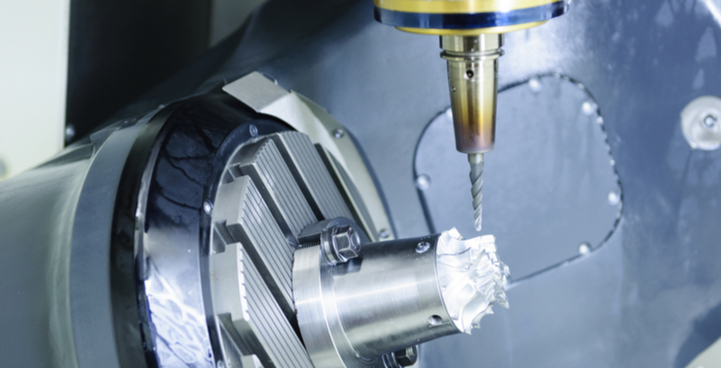
Productivity and Efficiency
CNC machining greatly improves the efficiency of productivity through its automatic operation and operation full time. Whereas traditional machining requires manual operation aided by skilled and experienced technicians, a CNC machine can work day and night with little need for supervision.
End to End Analysis of the Operation Time
Research by National Institute of Standards and Technology (NIST) showed that CNC machines can generate parts almost five times faster in comparison to traditional machines. For example, because CNC technology is employed, work that might consume hours in manual machining can be finished in minutes, which reduces production time substantially and increases overall throughput.
Impact on the efficiency of workforce
Precision grinding CNC automates the process, and eliminating the need for a human to constantly watch over the machine, a single human can sit at a computer and oversee a group of metal shaping machines. Of any kind of plant-wide CNC robotization, this decreasing direct labor could possibly result in a separate productiveness get up to 50%, while noted within research document by just McKinsey & Company. In addition to the streamlined production cycle, this move better distributes the available workforce across the shop floor.
from Industry
CNC technologies have been incorporated onto more and more systems in sectors like automotive production, even General Motors uses significant levels of CNC automation to improve production lines, some of the most interesting uses have been implemented by security services and government agencies. These machines take some of the sting out of machining engine components and other key parts, creating efficiencies that manual methods simply can not join. Such integration improves assemblage devices, lessens deliver times, and can speed time-to-market answer.
Labor and Cost Savings
Most of the production processes are automated in CNC machining and this means that there is less dependence on highly skilled people for manufacturing. On the other hand, traditional manufacturing relies largely on the experience and knowledge of the operators, their manual skills and dexterity. A Manufacturing Institute study reveals manufacturers using CNC technology can reduce their skilled work force up to 30% because one operator can oversee and manage multiple CNC machines at a time.
Efficient in case of the training and operation
CNC machine operators have stands for because they lenders are akin to a standardized and less time-intensive training necessary to become a CNC machinist requires an apprenticeship, while most machinists can expect to work their craft for as long as they are able. They get employees on-board quicker and thus enables a more agile workforce. According to Deloitte, CNC operators can be trained even 50% faster than those in classic machining jobs, reducing the need for training and allowing to deploy these workers on a production floor faster.
Decreased Left and Right Costs
Although one of the significant drawbacks of CNC machinery is the high initial investment cost, it is compensated against the savings longterm in labor costs, zero waste from precision, and lower error rates which also mean fewer reworks. One in-depth analysis from the Society of Manufacturing Engineers found that incorporating CNC machines can actually cut total manufacturing costs for mid-sized companies by up to 20%. Such savings are due to higher utilization of material and the possibility to perform multiple complex operations without additional setups and tools.
Real-World Industrial Savings
CNC in the Automotive Industry: Manufacturers such as Toyota have been able to achieve huge savings in production costs through the use of CNC machining by reducing labor and increasing part uniformity, which reduces the need for quality control and the inevitable subsequent corrections. After fully adopting CNC operations into their manufacturing Toyota reported that theyre production costs was drop by 15 percent.
Safety and Maintenance
CNC machining has far superior safety to simply traditional machining. Due to the automation, which occurs with CNC machines, humans do not interact with moving parts of cutting tools which, in turn, reduces the risk of workplace injuries. OSHA data indicate factories using CNC machines have seen a 25% drop in accidents related to machine operators. The machines are now safer because they are enclosed and so that operators can use automated controls to keep them from contact with dangerous parts.
Protocols & Challenges for Cloud Cost Management
On one hand, CNC machines improve working condition but on the other hands, CNC machines require more sophisticated maintenance than the traditional machines. The CNC system is quite complex as it involves software, electronics, mechanical parts and hence requires a skilled person for trouble-free maintenance. The Advanced Manufacturing Research Centre (AMRC) this week shared research that 70% of breakdowns that lead to production downtime could be avoided with regular servicing of CNC machinery. This maintenance entails a regular update of software, re-calibration, as well as the inspection of mechanical parts.
An Example in the Real-World of How This Affects Maintenance
A real-world example from the aviation division of General Electric demonstrates that how keeping CNC machines well maintained helps in the safety and longevity of operations. Example: GE instituted a predictive maintenance program that employs data analytics to predict when machines will fail, before actual failure occurs. This methodology has resulted in a 30% reduction in unplanned downtime, and increased the life of the machines by 40%.
Training and Safety Education
For safety and to make process as effective as possible, CNC operators require that all operators of such machines are proficient with not just running the machine, but knowing when to hit emergency stops. This training is helpful as it helps operators run CNC machinery safely and to detect any hazard which may arise during the process. Siemens has training courses for that span CNC maintenance and safety to increase the industry standard of safe practices at work.

Flexibility and Capabilities
Compared with traditional machining methods, CNC machining itself is very versatile. It is capable of creating complex geometries and delicate designs to a high degree of precision and accuracy. This flexibility reveals itself through advanced computer software that manages the machine process and makes adjustments and modifications easy. This operational adaptability is manifested in the ability of a CNC machine to switch from producing aerospace components to medical devices within minutes, and with very low uptimes.
Expertise in managing complex designs
CNC machines are capable of manufacturing intricate parts that would be difficult or impossible to produce with conventional machining. Although, the University of California, Berkeley released a study which emphasized, that CNC technology can get states down to ±0.001 inches, which is crucial in the case of precision industry. By comparison, achieving such fine tolerances is frequently impossible via traditional means which need manual modifications and less precise machinery.
Industrial Application
An example of this CNC flexibility exists in the electronics industry, where companies like Apple make use of the CNC machines to manufacture the aluminum casings that enclose their products. Such machines are capable of accurately machining complex shapes and design to utmost perfection guaranteeing that each unit is of the desired specification. So the faster you can adapt to designs changes, the better you serve this fast, nimble, market.
Flash Pro’s Prototyping and Customization Efficient
Rapid: CNC machines are used for their rapid prototype, and customized for industry demands. Prototyping times have in some cases been cut by as much as 60% with the use of CNC machines in prototyping (MIT research) This increases the speed of rolling the product into the market and ability of companies to respond to changing demands of the customers. By contrast, traditional machining which uses manual processes, is at least as slow in accomplishing this.
On the Impact to Manufacturing Dependent Processes
BMW uses CNC technology for the manufacture and customization of standard components for their vehicles in the automotive industry. The machinery has the capability to offer a very wide variety of customizations to their customers, and still manage to be efficient in production. CNC machining allow us to produce custom part when even we needed without long retooling demonstrating the flexibility and capability of CNC machining.


